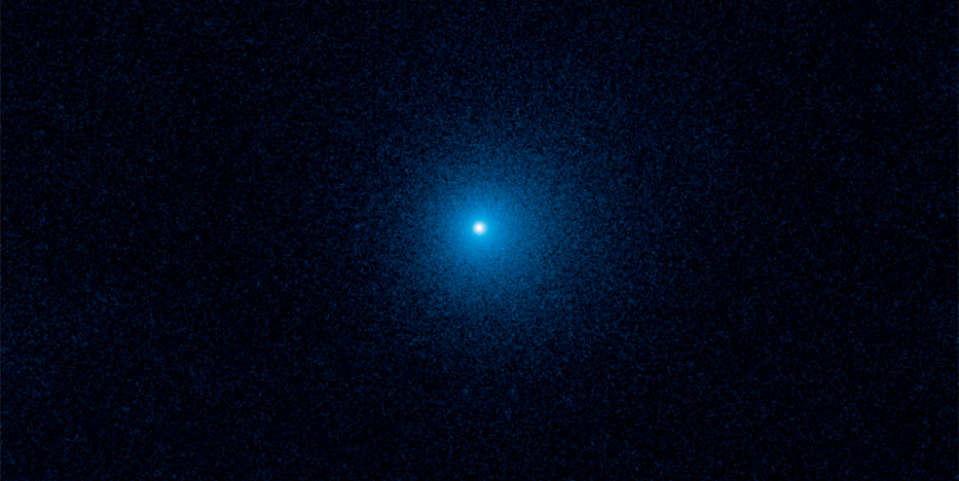A Comet Nearing Earth Could Be One of the Largest We’ve Ever Seen

The Comet C/2017 K2 was discovered in 2017, and at the time was the farthest comet from Earth.
On July 14, Comet K2 will get as close to Earth as it will for millions of years, making it visible with small telescopes for a short period of time.
Scientists are unsure of its size, but the comet could be one of the largest ever spotted.
Comet C/2017 K2 (PanSTARRS) could be one of the largest we’ve ever spotted. Now, it’s drawing closer and closer to Earth, and is expected to be nearest to us on July 14.
At 172 miles from Earth and nearing, Comet K2 can already be seen through small telescopes. The best views should come around mid-July, when the comet reaches its nearest point to Earth, but you could still catch a glimpse of it well into September as it continues a run toward the sun in December, before orbiting away from Earth once more for millions of years.
☄️ You love the cosmos. So do we. Let’s nerd out over cool space sh*t together—join Pop Mech Pro.
First observed in 2017 by the Hawaiian-based Pan-STARRS survey instrument, it was the farthest-ever active inbound comet ever seen. At the time, NASA called it the most “primitive” as well, because it was spotted 1.5 billion miles from the sun. Five years ago, the comet was journeying between Saturn and Uranus, but as it slowly nears us, amateur astronomers in the Northern Hemisphere have their scopes trained on it.
The magnitude and behavior of Comet K2 isn’t fully known. Some astronomers believe its nucleus to be at least 11 miles wide, but others suggest it could be as large as 18 to 100 miles in diameter. Even in a conservative measurement, it could be one of the larger comets we’ve seen. In 2017, images from the Hubble Space Telescope showed off the features of this fuzzy snowball of a comet.
Comets, made mostly of rock and ice, generally activate as they near the sun and the ice heats. Comet K2 is plenty active—likely from a mixture of nitrogen, carbon dioxide, carbon monoxide, and molecular oxygen. It created a tail, dubbed a coma, of dust and gas at least 81,000 miles in diameter, roughly the size of Jupiter. K2’s tail may stretch as far as 500,000 miles; That’s quite a few Jupiters.
“K2 is so far from the sun and so cold, we know for sure that the activity—all the fuzzy stuff making it look like a comet—is not produced, as in other comets, by the evaporation of water and ice,” David Jewitt, a University of California, Los Angeles lead researcher, said in a news release in 2017 after the Hubble Space Telescope photographs were released. “Instead, we think the activity is due to the sublimation of super-volatiles as K2 makes its maiden entry into the solar system’s planetary zone. That’s why it’s special. This comet is so far away and so incredibly cold that water ice there is frozen like a rock.”
Everything we know about Comet K2 could change. Typically, the sun wreaks havoc on comet’s plans, sometimes making them brighter and more active. Other times, the sun just shatters them apart. With Comet K2 so powerful without the help of the sun, astronomers are watching to see what happens to it in 2022 and beyond.
With a name reminiscent of the mountain it dwarfs, Comet K2 could still be one of the largest comets known to our solar system. But for now, the honor of largest-ever comet goes to C/2014 UN271 (Bernardinelli-Bernstein), which has a nucleus roughly 85 miles in diameter, or larger than the state of Rhode Island.
You Might Also Like
